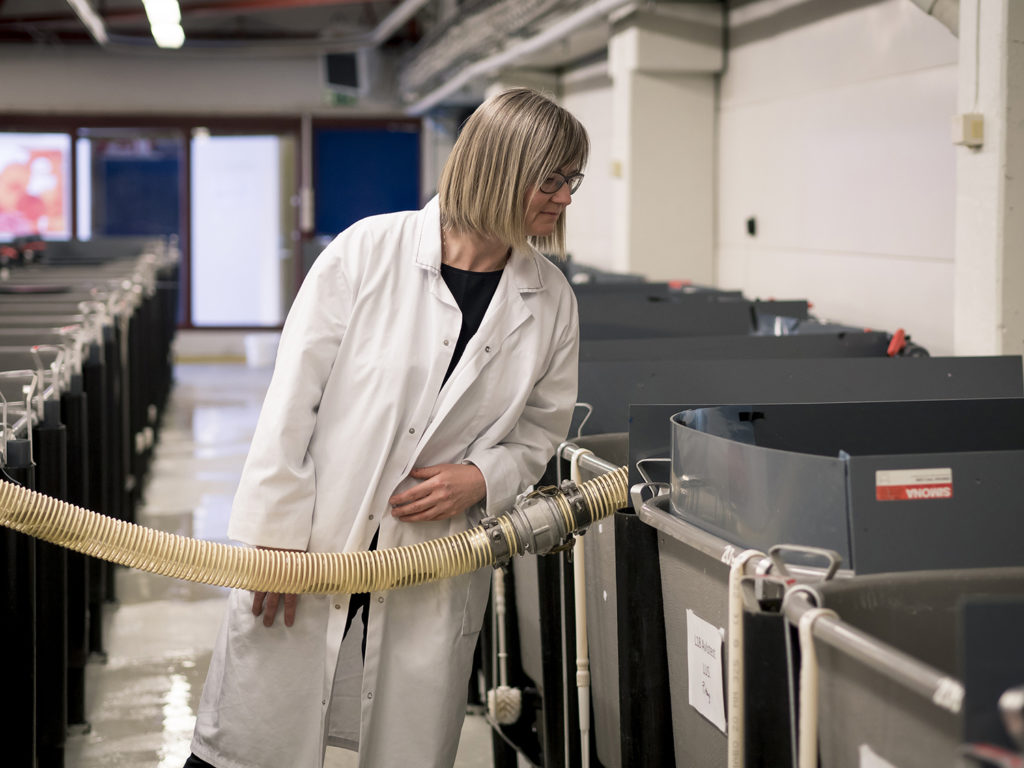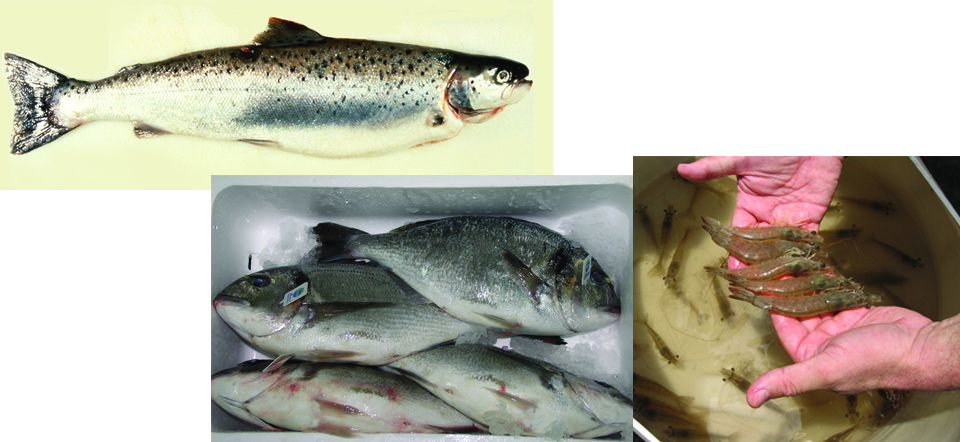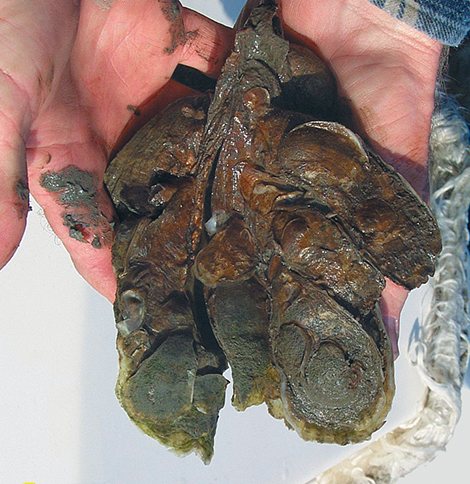New insights into how immune response coordinates with other physiological processes

How was resistance to Infectious Hypodermal and Hematopoietic Necrosis Virus and Taura Sydrome Virus in shrimp achieved through selective breeding, and why are some species more susceptible than others? Why does White Spot Syndrome Virus (WSSV) not follow these patterns? How do viral mutations alter host range and pathogenicity? How can we identify unknown genes associated with improved disease resistance
These and many other fundamental questions with regard to shrimp disease and immunity remain unanswered as continually emerging viral pathogens challenge our scientific resources. Our basic understanding of crustacean responses to bacterial and fungal disease is limited, and in the case of antiviral defense, relatively little is known.
New approaches
This lack of information, coupled with limited scientific resources, has hindered traditional hypothesis-based, scientific methodologies, making necessary new and more powerful approaches. To this end, a multi-institutional marine genomics initiative has been developed in Charleston, South Carolina, USA to apply functional genomics to the study of host-virus interactions in marine shrimp.
This approach offers the possibility of rapid gene discovery, the potential to study gene regulation on a large scale by transcript profiling, and the opportunity to take potential immune-function genes identified by these two approaches straight into more traditional hypothesis-driven research projects and selective-breeding programs.
Functional genomics
The aim of the genomics studies on innate antiviral immunity in marine shrimp is to characterize the genes and pathways involved in the response of Litopenaeus vannamei to WSSV and other viruses. Thus, the program’s primary goal is to generate a comprehensive collection of the genes expressed in different tissues of L. vannamei, with emphasis on those genes potentially involved in immune response.
Shrimp genome
Penaeid shrimp possess a genome that is about 70 percent that of the human genome. With current estimates for the number of expressed genes in humans running 30,000 to 50,000 genes, penaeid shrimp are expected to express about 20,000 to 35,000 genes.
To date, analysis of more than 8,000 sequences obtained from three shrimp tissues of immunological interest (hemocytes, gills, and hepatopancreas) by comparison to the National Center for Biotechnology Information (NCBI) GenBank database has resulted in the identification of 2,735 different genes termed unigenes. The initial libraries from which these unigenes were collected were not manipulated, giving the opportunity to assess the investment of metabolic energy in diverse physiological systems, including immune function.
Immune defense
This approach led to the discovery that shrimp hemocytes, as predicted, devoted a significant amount of energy to immune defense, primarily in the area of transcription of genes involved in microbial defense against infection (e.g., antimicrobial peptides). In addition, the immune function of the hepatopancreas,which had not hitherto been demonstrated in shrimp, was revealed by the presence in this organ of several transcripts for immune-related genes, primarily those involved in immune recognition and binding of foreign materials (e.g., β-glucan binding protein and lectins).
To selectively increase the abundance of rare genes and genes of significance in disease response, more than half of the expressed genes in thecollection have been isolated from source libraries representing genes whose abundance is either increased or decreased in animals infected with WSSV relative to noninfected control animals.
Similar collections were made for shrimp stimulated with a mixture of heat-killed bacteria (Vibrio parahemolyticus, Aerococcus viridans) and fungal spores (Fusarium oxysporum) relative to unstimulated controls. Because hyperthermia can greatly improve the survival of L. vannamei to WSSV, researchers also isolated genes specifically expressed under hyperthermic conditions during WSSV infection.
Well-defined pathways
Direct analysis of the shrimp gene collection has provided important information about the presence of well-defined pathways likely involved in the immune response of shrimp. The authors have found immune function genes previously unreported in crustaceans, as well as genes encoding proteins shown to play immune roles in other organisms.
The genes encoding components of many predicted immune functions and pathways currently represent no more than 6 percent of the isolated shrimp unigenes. However, what may in the end be equally as important as these known genes are the presently unidentified genes, which represent approximately two-thirds of the unigene collection.
Given our ignorance of shrimp immune response, it is likely this “unknown” group contains genes whose products are of importance in shrimp immune function. This is especially the case regarding shrimp antiviral immunity. To date, nothing is known of the mechanism of antiviral immunity in any invertebrate, including the fruit fly Drosophila.
About half the shrimp ESTs that have been collected are available for public access at http://www.marinegnomics.org. The rest of the sequences are being deposited in this database and the national database at NCBI.
Microspotting technology
To understand how these genes are involved in immune response and other processes, it is necessary to consider how their abundance changes upon environmental cues of interest. To accomplish this, a cDNA microarray has been created containing othe entire shrimp and WSSV gene collection. A microarray is a solid surface, typically a glass slide, on which microdrops of DNA solution representing each gene can be individually spotted at high densities.
Modern microspotting technology allows the generation of substrates containing up to 10,000 genes. Because the physiological status of an organism at any given time should be reflected in the collection of its expressed genes, cDNA microarrays can be used to understand how environment and pathogens affect shrimp health.
Immune-relevant genes
The quantification of the relative expression of thousands of genes simultaneously should provide a comprehensive picture of the cellular and molecular mechanisms working in concert in situations of stress and disease. It may also allow identification of immune-relevant genes among the “unknown” unigenes.
Conclusion
Functional genomics studies should provide new insights into how the immune response is coordinated and related to other physiological processes in shrimp. They will also allow the identification of new genes involved in the immune response by providing information about how novel genes are co-regulated with bona fide immune effectors at the expression level.
In combination with work from the U.S. Marine Shrimp Farming Program and commercial companies involved with traditional pathobiology and selective-breeding programs, the information generated from the shrimp genomics program has the potential to greatly improve the pace of discovery and basic understanding of shrimp immunity while accelerating the development of effective immunostimulants, chemotherapeutants, and improved genetic lines.
(Editor’s Note: This article was originally published in the April 2003 print edition of the Global Aquaculture Advocate.)
Now that you've reached the end of the article ...
… please consider supporting GSA’s mission to advance responsible seafood practices through education, advocacy and third-party assurances. The Advocate aims to document the evolution of responsible seafood practices and share the expansive knowledge of our vast network of contributors.
By becoming a Global Seafood Alliance member, you’re ensuring that all of the pre-competitive work we do through member benefits, resources and events can continue. Individual membership costs just $50 a year.
Not a GSA member? Join us.
Authors
-
Javier Robalino, M.S.
Dept. of Biochemistry and Molecular Biology
Medical University of South Carolina
P.O. Box 250509
Charleston, South Carolina 29425 USA -
Paul S. Gross, Ph.D.
Dept. of Biochemistry and Molecular Biology
Medical University of South Carolina
P.O. Box 250509
Charleston, South Carolina 29425 USA -
Greg W. Warr, Ph.D.
Dept. of Biochemistry and Molecular Biology
Medical University of South Carolina
P.O. Box 250509
Charleston, South Carolina 29425 USA -
Robert W. Chapman, Ph.D.
Marine Infectious Disease Laboratory
Marine Resources Research Institute
South Carolina Dept. of Natural Resources
Charleston, South Carolina, USA -
Craig L. Browdy, Ph.D.
Marine Infectious Disease Laboratory
Marine Resources Research Institute
South Carolina Dept. of Natural Resources
Charleston, South Carolina, USA[117,100,101,46,99,115,117,109,64,108,99,121,100,119,111,114,98]
Related Posts

Innovation & Investment
AquaGen CEO: Genomics are transforming aquaculture
The CEO of AquaGen knew that the Norwegian research group’s work in genomics was key to the salmon industry’s future. And that was before she even worked there.

Health & Welfare
Aquaculture genomics: Progress in identifying species genetics continues
The continued application of genome research to aquaculture will provide unprecedented accuracy for genetic selection of performance and production traits.

Health & Welfare
Ecogenomics: New approach to understanding oyster health
The health of two key oyster species – the American and Pacific – is constantly under threat of parasitic infections leading to diseases MSX and dermo.

Health & Welfare
Emerging disease: Shrimp Hemocyte Iridescent Virus (SHIV)
SHIV is a new Pacific white shrimp virus in the Iridoviridae family. Authors also developed an ISH assay and a nested PCR method for its specific detection.


